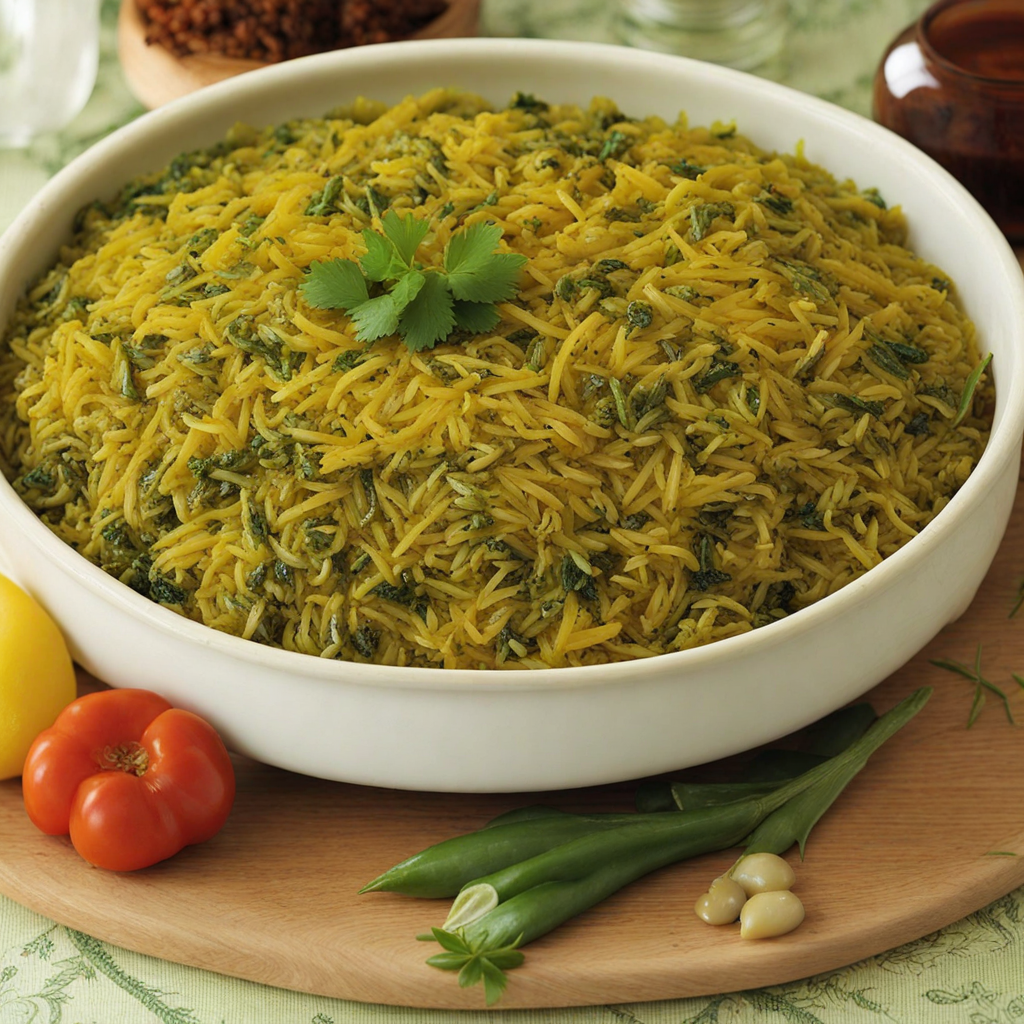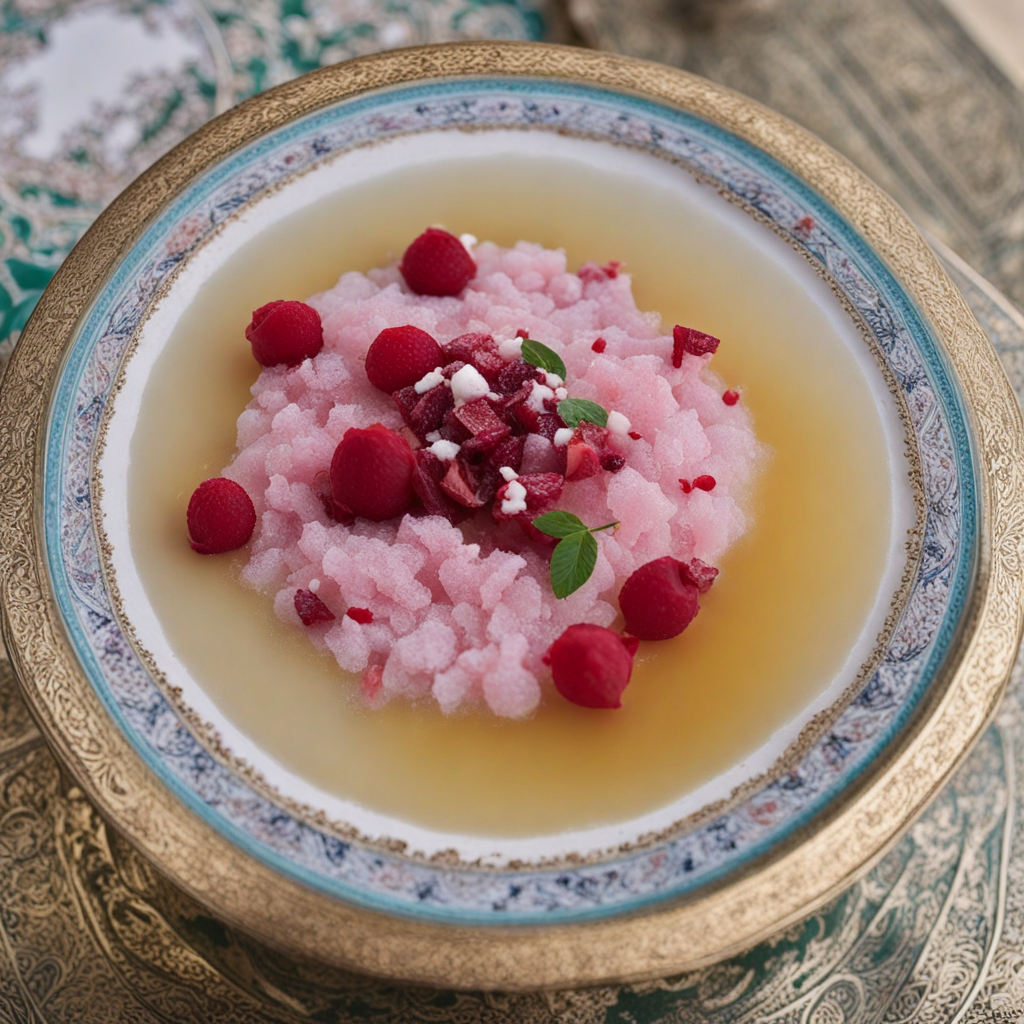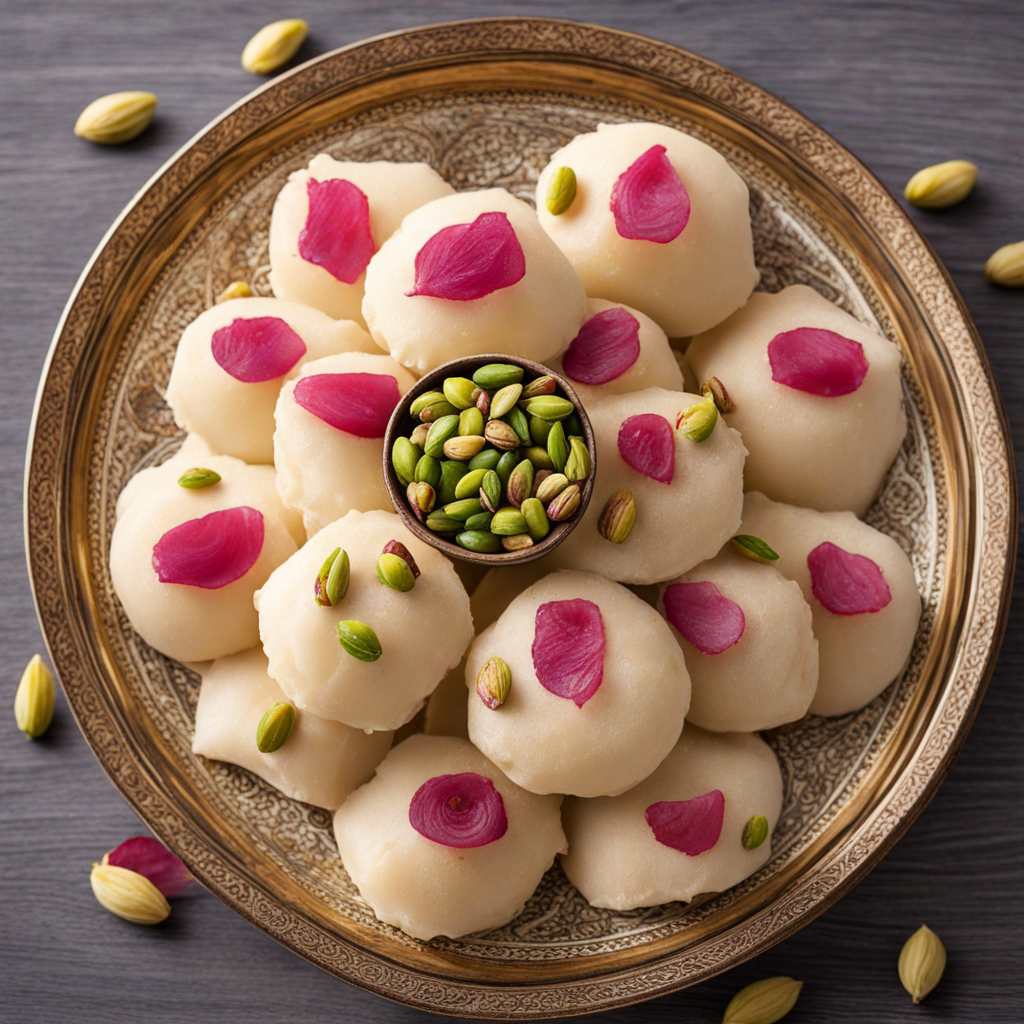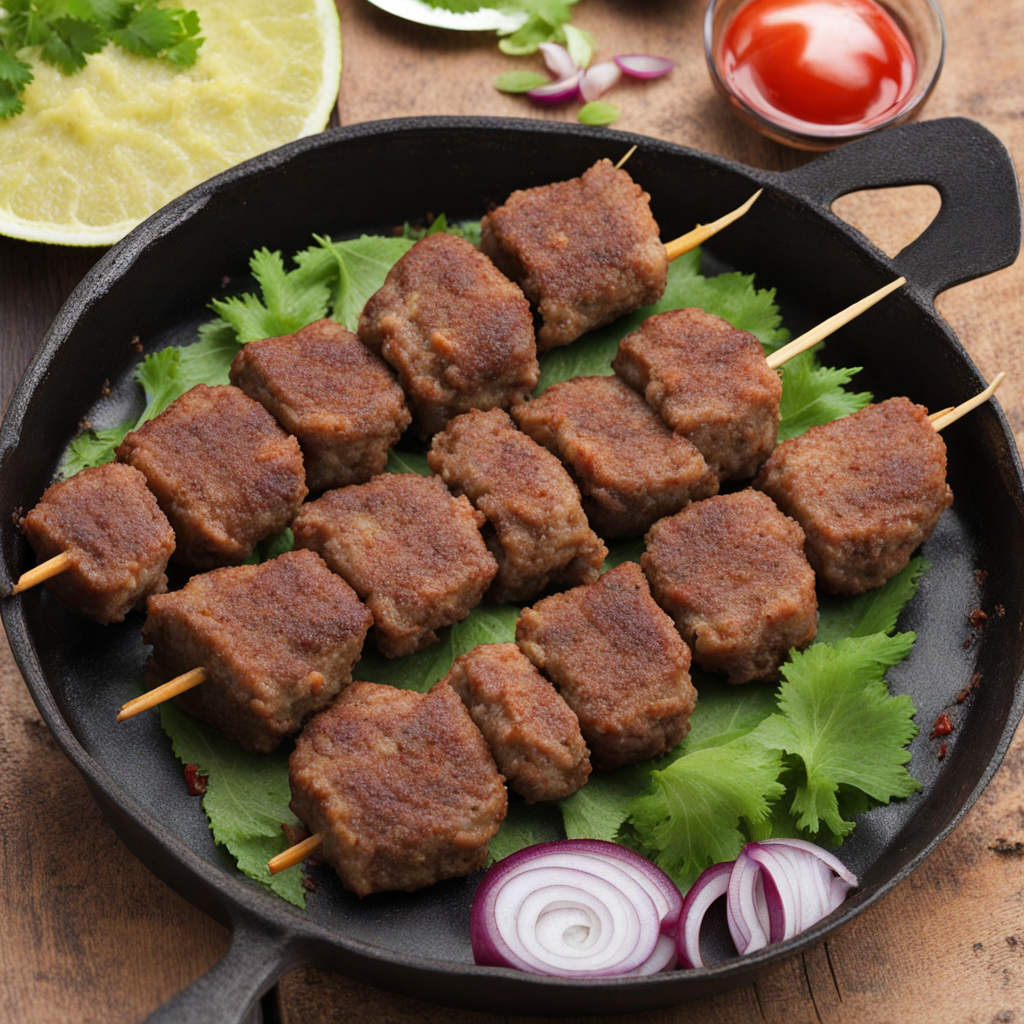Sabzi Polo
سبزی پلو, or "Sabzi Polo," is a traditional Iranian rice dish that highlights the country's rich culinary heritage. This fragrant dish is primarily composed of basmati rice mixed with a variety of fresh herbs, most notably dill, parsley, cilantro, and green onions. Traditionally served during festive occasions such as Nowruz (the Persian New Year) and other significant celebrations, Sabzi Polo is not just a meal; it is a symbol of renewal and the arrival of spring, as the herbs represent freshness and fertility. The history of Sabzi Polo can be traced back to ancient Persia, where rice was a staple food. The blending of herbs with rice dates back centuries and reflects the Persian philosophy of using fresh, natural ingredients to enhance the flavor and nutritional value of meals. Over time, various regional variations have emerged, often influenced by local customs, available ingredients, and seasonal changes. Sabzi Polo is particularly notable for its association with fish, especially during special occasions, where it is often served alongside fried or grilled fish, creating a harmonious balance of flavors. The flavor profile of Sabzi Polo is vibrant and aromatic, with the fresh herbs imparting a distinct, slightly grassy taste that contrasts beautifully with the nutty undertones of the basmati rice. The dish is typically seasoned with salt and sometimes saffron, which adds a subtle warmth and a golden hue when mixed in. Together, these elements create a delightful and refreshing dish that is both comforting and celebratory. Preparation of Sabzi Polo involves
How It Became This Dish
Origin of سبزی پلو سبزی پلو, or Sabzi Polo, is a traditional Iranian dish that beautifully encapsulates the essence of Persian cuisine. The dish's roots can be traced back to ancient Persia, where rice was a staple food, and the use of herbs and greens was prevalent in daily cooking. The word "پلو" (Polo) refers to rice, while "سبزی" (Sabzi) means greens or herbs, indicating the dish's primary components. Rice cultivation in Iran dates back over 2,500 years, and its prominence in Persian culture has remained steadfast throughout history. In the early days, the Iranians would use whatever fresh herbs were available, which would vary by season and region. The most common herbs used in سبزی پلو include dill, parsley, cilantro, and green onions. The method of cooking rice by steaming it alongside herbs reflects a unique culinary technique that showcases both the flavor and nutritional benefits of fresh greens. This cooking style has been passed down through generations, becoming a cherished part of Persian culinary heritage. Cultural Significance The significance of سبزی پلو extends beyond mere sustenance; it holds a symbolic place in Iranian culture. Traditionally served during festive occasions, such as Nowruz (the Persian New Year), weddings, and family gatherings, سبزی پلو represents renewal and abundance. The vibrant green color of the herbs is associated with spring and new beginnings, embodying the spirit of growth and prosperity that is celebrated during these occasions. In Iranian households, preparing سبزی پلو is often a communal activity, bringing families together. The process involves washing, chopping, and cooking the herbs, which can take time and care. This shared experience reinforces family bonds and fosters a sense of community. Additionally, the dish is frequently paired with various proteins, such as fish or chicken, which further enhances its celebratory nature. The combination of flavors and textures makes سبزی پلو a centerpiece at any gathering, showcasing the importance of hospitality in Iranian culture. Development Over Time Over the centuries, سبزی پلو has evolved. The dish's preparation and presentation have been influenced by various factors, including geography, available ingredients, and cultural exchanges. As trade routes facilitated the movement of spices and culinary techniques, Persian cuisine, including سبزی پلو, absorbed these influences, enriching its flavor profile. In rural areas, سبزی پلو might be prepared with foraged greens, reflecting the local environment's bounty. In contrast, urban centers have seen the dish adapted to include a wider variety of herbs and spices, resulting in regional variations that cater to diverse palates. For instance, in southern Iran, the use of sour citrus, such as lime, adds a tangy note that contrasts beautifully with the fragrant herbs, while northern Iran may incorporate saffron for a luxurious touch. The dish also underwent transformations during significant historical events, such as the Safavid and Qajar periods, when the royal courts embraced extravagant culinary practices. This period saw the introduction of elaborate presentations and the use of high-quality ingredients, influencing how سبزی پلو was served at banquets and celebrations. The dish became a symbol of status and refinement, often garnished with nuts or served alongside rich stews. Modern Interpretations In contemporary Iran, سبزی پلو remains a beloved dish, enjoyed by people of all ages. The rise of globalization and the internet has facilitated the exchange of recipes and cooking styles, leading to innovative interpretations of this classic dish. Chefs and home cooks alike experiment with new ingredients, such as quinoa or other grains, while still honoring the traditional essence of سبزی پلو. Moreover, the dish has gained international recognition, appearing on menus in Persian restaurants around the world. This exposure has introduced various cultures to the rich flavors and textures of Iranian cuisine, encouraging culinary enthusiasts to explore traditional Persian cooking methods. As a result, سبزی پلو has transcended its local roots, becoming a symbol of Iranian identity and hospitality on a global scale. Health Aspects From a nutritional perspective, سبزی پلو is a wholesome dish that offers numerous health benefits. The combination of rice and fresh herbs provides a balanced meal, rich in vitamins, minerals, and fiber. The use of herbs is particularly noteworthy, as they are known for their antioxidant properties and potential health benefits, including improved digestion and enhanced immunity. In recent years, there has been a growing interest in plant-based diets, and سبزی پلو fits seamlessly into this trend. The dish's emphasis on fresh vegetables and herbs makes it an appealing option for those seeking healthier meal alternatives. Additionally, the versatility of سبزی پلو allows it to be easily adapted to accommodate various dietary preferences, whether vegan, vegetarian, or gluten-free. Conclusion and Future of سبزی پلو As the world continues to embrace culinary diversity, سبزی پلو stands as a testament to the rich history and cultural significance of Iranian cuisine. Its evolution over time reflects the adaptability and resilience of traditional cooking practices, ensuring that this cherished dish remains relevant in a modern context. Looking ahead, the future of سبزی پلو appears bright. As new generations of cooks explore their culinary heritage, they are likely to continue refining and redefining this iconic dish. Whether enjoyed in a traditional setting or reimagined in contemporary kitchens, سبزی پلو will undoubtedly remain a beloved part of Iranian culture, celebrating the vibrant flavors and communal spirit that define Persian cuisine.
You may like
Discover local flavors from Iran







